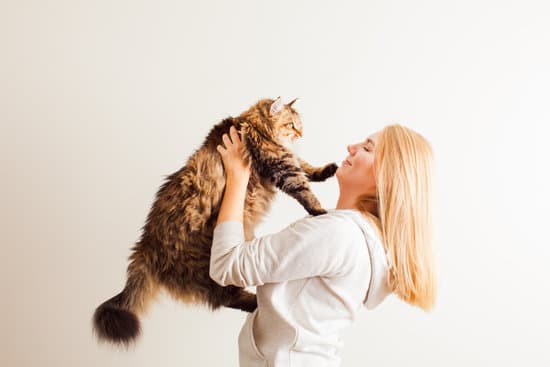Decoding Feline Behaviors
Cats are a beloved pet for millions of people around the world. While they may be known for their independent nature, kittens can also form strong bonds with their owners. However, it can be difficult to determine if your cat truly loves you or if they are simply tolerating your presence. In this article, we will explore the various signs that your cat loves you and how to interpret their behaviors.
One of the most common signs that your cat loves you is through physical affection. Cats are known for their love of cuddling and will often seek out their owner’s lap for a nap or snuggle. They may also rub their head against you or knead with their paws, which are both signs of affection. However, it’s important to note that not all kittens enjoy physical contact, so it’s important to pay attention to your kitten’s body language and respect their boundaries.
Another way that cats show their love is through vocalization. While some cats are naturally talkative, others may only meow when they want something. If your kitten frequently meows at you or makes chirping noises, it could be a sign that they are happy to see you and enjoy your company. Additionally, purring is a common sign of contentment and can be a good indicator that your kitten is feeling relaxed and comfortable around you.
Physical Affection

Head Butting
Cats show their love through physical affection, and one of the most common ways they do this is through head-butting. This behavior is also known as “bunting.” When a kitten head-butts you, it is a sign that they trust you and feel comfortable around you. It’s their way of saying “hello” or “I love you.”
Head-butting is also a way for kittens to mark their territory. They have scent glands on their head, and when they rub their head against you, they are leaving their scent on you. This is a way for them to claim you as their own.
Cheek Rubs
Another way cats show physical affection is through cheek rubs. When a cat rubs their cheek against you, they are marking you with their scent. This is a way for them to show that you are a part of their family.
Cheek rubs are also a way for kittens to show their love and affection. When a kitten rubs their cheek against you, they are saying “I love you” in their own way.
Kneading
Kneading is a behavior that kittens do when they are happy and content. It’s when they push their paws in and out against a soft surface, such as a blanket or your lap. This behavior is also known as “making biscuits.”
Kneading is a sign that your cat loves and trusts you. It’s a behavior that they do when they feel safe and secure. It’s also a way for them to show their affection and love for you.
In conclusion, physical affection is one of the many ways that cats show their love and affection for their owners. Head-butting, cheek rubs, and kneading are all behaviors that indicate that your cat loves and trusts you. By understanding these behaviors, you can deepen your bond with your feline friend.
Communication Signals

Purring
Cats are known for their soothing purrs, which can indicate a range of emotions. While purring is often associated with contentment, it can also be a sign of pain, fear, or anxiety. If your kitten is purring while being petted, it is likely that they are enjoying the attention. However, if your kitten is purring while hiding or crouching, it could be a sign that they are feeling threatened or scared.
Meowing
Meowing is a common form of communication for kittens, and it can have many different meanings. Some kittens meow to get attention, while others meow to express their needs or desires. For example, a kitten might meow to let you know that they are hungry or thirsty, or they might meow to ask for affection. However, excessive meowing can also be a sign of stress or anxiety, so it is important to pay attention to your kitten’s body language and behavior.
Slow Blinking
Slow blinking is a subtle but important communication signal that kittens use to show affection and trust. When a kitten looks at you and blinks slowly, it is a sign that they feel relaxed and comfortable in your presence. This behavior is often referred to as a “kitten kiss,” and it is a clear indication that your kitten loves you.
Overall, understanding your kitten’s communication signals can help you build a stronger bond with your furry friend. By paying attention to their body language, vocalizations, and behaviors, you can learn to decode their messages and respond appropriately.
Behavioral Indicators

Following You
One of the ways a kitten shows affection is by following their owner around. If your feline friend is always by your side, it could be a sign that they love you. This behavior is more common in indoor kittens who have a strong bond with their owners.
Bringing Gifts
Cats are known to bring gifts to their owners, which can be anything from a toy to a dead mouse. While it may not seem like a pleasant gift to humans, it is a sign of affection from the kitten’s perspective. This behavior is more common in outdoor kittens who are natural hunters.
Showing Belly
When a kitten shows its belly, it is a sign of trust and affection. It means that the kitten feels safe and comfortable around its owner. However, it is important to note that not all kittens enjoy belly rubs, so it’s important to read their body language before attempting to pet their belly.
Overall, these behavioral indicators can help kitten owners understand their feline friends better and strengthen their bond with them.
Territorial Behaviors
Scratching
Cats have a natural instinct to scratch, and it’s not always a sign of aggression or bad behavior. In fact, scratching is a way for kittens to mark their territory and keep their claws healthy. If your kitten scratches furniture or other objects in your home, it may be a sign that they are trying to establish their territory and make it feel more like home.
To prevent your kitten from scratching furniture, provide them with a scratching post or pad. You can also try placing double-sided tape or aluminum foil on the areas they tend to scratch, as kittens generally don’t like the texture. Additionally, trimming your kitten’s nails regularly can help reduce the damage caused by scratching.
Spraying
Spraying is a behavior that is more commonly associated with male kittens, but female kittens can also exhibit this behavior. Spraying is a way for kittens to mark their territory and communicate with other kittens. It’s important to note that spraying is different from urinating outside of the litter box, which may be a sign of a medical issue or litter box aversion.
If your cat is spraying, it’s important to identify the cause and address it. Possible causes of spraying include stress, anxiety, and the presence of other kittens in the home. Providing your kitten with a comfortable and secure environment, as well as plenty of attention and playtime, can help reduce their stress levels and prevent spraying. In some cases, medication may be necessary to address underlying anxiety or behavioral issues.
Time Spent Together

Shared Naps
Cats are known for their love of napping, and if your feline friend chooses to snooze near you, it’s a good sign that they feel safe and comfortable around you. If your kitten curls up next to you or on your lap for a nap, it’s a clear indication that they trust you and enjoy your company.
Mutual Grooming
Cats are fastidious creatures and spend a lot of time grooming themselves. However, if your kitten chooses to groom you, it’s a sign of affection and trust. Mutual grooming is a bonding experience that strengthens the relationship between kittens and their owners. If your cat licks your hair or face, it’s a clear indication that they love you.
Overall, spending time with your kitten is an important part of building a strong bond. Whether you’re cuddling on the couch or playing with toys, your cat will appreciate the time you spend together. By paying attention to your kitten’s behaviors, you can learn to decode their signals and deepen your relationship.









